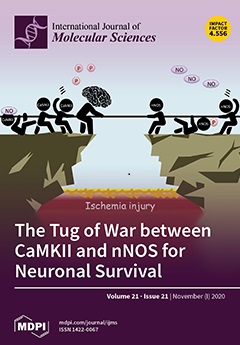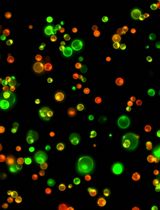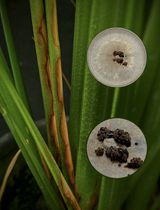- EN - English
- CN - 中文
Rhizoctonia solani Infection Assay of Young Sugar Beet and Arabidopsis plantlets
甜菜和拟南芥幼苗丝核枯菌侵染试验
发布: 2022年01月20日第12卷第2期 DOI: 10.21769/BioProtoc.4300 浏览次数: 3583
评审: Juan Facundo Rodriguez AyalaAndrea Paola ZuluagaWeiyan JiaShuhei Ota
Abstract
Rhizoctonia solani is a soil-borne fungus, which rarely produces any spores in culture. Hence, all inoculation procedures are based on mycelia, often as a coat on cereal kernels, placed in close vicinity to the plant to be infected. In this protocol, an inoculation method is described where the fungus is first allowed to infest a perlite-maize flour substrate for 10 days, followed by thorough soil mixing to generate uniform fungal distribution. Pre-grown seedlings are then replanted in the infested soil. Plant materials can be harvested, five (sugar beet) and ten days (Arabidopsis) post infection, followed by a rapid cleaning step ahead of any nucleic acid preparation. Commercial DNA or RNA extraction kits can be used or, if higher DNA yield is required, a CTAB extraction method. Our purpose was to develop a reliable and reproducible protocol to determine the infection levels in planta upon infection with R. solani. This protocol is less laborious compared to previous ones, improves the consistency of plant infection, reproducibility between experiments, and suits both a root crop and Arabidopsis.
Graphic abstract:

Overview of the R. solani infection procedure.
Background
Sugar beet (Beta vulgaris) is a biennial plant species grown for its high sugar content in the taproot. In temperate regions where this crop is mainly grown, it takes about six months from sowing to harvesting (Draycott, 2006). This long timespan exposes the root to several soil-borne pathogens, such as Rhizoctonia solani. Rhizoctonia solani can cause damping-off disease on seedlings or root and crown rot disease on older roots, and this has developed into a major and increasing problem in sugar beet growing areas (Kluth and Varrelmann, 2010). The isolates of this fungal basidiomycete are divided into hyphal anastomosis groups (AGs). AG2-2IIIB is the subgroup that mainly incites disease on sugar beet, but such strains can also infect maize, resulting in problems where these two crops are used in the same crop rotation scheme (Führer Ithurrart et al., 2004).
Preparing materials for more advanced molecular analyses have become problematic due to the absence of asexual spores (conidia) and the sexual stage being very rare (Parmeter, 1970), which limits more precise inoculation procedures using specified spore concentrations. Hence, inoculation of sugar beets in the greenhouse is traditionally performed by replacing soil around the plants in the pots with infected millet seeds or infected ground barley kernels, followed by disease scoring (Scholten et al., 2001; Bolton et al., 2010). Under field conditions, infected ground barley kernels are spread in furrows or broadcast before sugar beet seeds are drilled. Alternatively, the barley kernels are placed in the crown of the plant, at the eight-leaf growth stage (Strausbaugh et al., 2013). These procedures can cause variation in terms of amount of fungal DNA being established on the host plant surface, thereby affecting the observed plant responses. There are methods available for measuring fungal DNA concentration in soil (Budge et al., 2009; Abbas et al., 2014). One of the problems, is that DNA concentration is rarely correlated with disease symptoms. Other factors that influence disease development is soil composition, soil humidity, and temperature (Bolton et al., 2010). Here, we describe in detail how to generate diseased plants under controlled growth conditions, followed by extraction of reproducible amounts of RNA or DNA. This protocol has been used to identify defense genes against R. solani in sugar beet and Arabidopsis (Holmquist et al., 2021). Our plant infection method was instrumental to identify the R. solani virulence factor RsLysM (Dölfors et al., 2019), the protease inhibition effector RsRlpA (Charova et al., 2020), and the mitochondria and chloroplast targeting effector RsCRP1 (Tzelepis et al., 2021). RNA and DNA obtained through this protocol can be used to monitor plant transcript responses to R. solani and measure fungal colonization in planta, including fungal activities during plant pathogen interaction.
Materials and Reagents
Materials
Plant pots, small pots (6 × 6 × 5 cm) and big pots (13 × 13 × 13 cm) (SW Horto, catalog number: 700-245)
Plant trays (34 × 22 × 4 cm) (Nelson Garden, catalog number: 5770)
Soil (S-soil, Hasselfors Garden, Örebro, pH 5.5-5.6) composed of sighted light peat, black peat, perlite, sand, and lime
Miracloth Calbiochem® (Merck, catalog number: 475855-1)
Glass beakers (250 mL VWR, catalog number: 213-0014)
Laboratory bottles (500 mL SARSTEDT, catalog number: 3607507)
Plastic petri dishes (Ø × H: 92 × 16 mm, SARSTEDT, catalog number: 82.1473.001)
Glass Petri dishes (Ø × H: 92 × 16 mm, Fisher Scientific, catalog number: 1201333)
Eppendorf micro-tubes (SARSTEDT, catalog numbers: 72.690.001 [1.5 mL]; 72.695.500 [2.0 mL])
Spoon (sterile)
Aluminum foil
Scalpel and blades (Fisher Scientific, catalog numbers: 12348019 and 12398009)
Mortar and pestle (80 mm × 92 mm, VWR, catalog number: 470148-960)
Parafilm (10.2 cm × 38.1 m, VWR, catalog number: 52858-000)
Filtropur sterilization filter S0.2 (SARSTEDT, catalog number: 83.1826.001)
Plants
Beta vulgaris seeds (DLF Beet Seed)
Arabidopsis thaliana, Col-0 (Arabidopsis Information Resource, TAIR)
Pathogen
The Rhizoctonia solani AG2-2IIIB BBA 69670 isolate (Wibberg et al., 2016) was used throughout the work.
Molecular biology working kit
DNeasy plant mini kit (Qiagen, catalog number: 69104)
RNeasy plant mini kit (Qiagen, catalog number: 74903)
Other reagents
Inoculum medium (see Recipes)
Potato dextrose agar, PDA (Applichem, catalog number: A5838)
Distilled water
Perlite, 0-6.5 mm (SW Horto AB, Hammenhög, Sweden)
Maize flour (Risenta, Sollentuna, Sweden)
Liquid nitrogen
Chloroform, EMSURE® ACS, ISO, Reag. Ph. (VWR, catalog number: 1.02445.1000, CAS number: 67-66-3)
Isopropanol (2-Propanol, EMSURE ACS, ISO, Reag. Ph. Eur. for analysis, VWR, catalog number: 1.09634.5000)
Ethanol (70%)
Sodium chloride (NaCl) (Saveen Werner AB (Duchefa), catalog number: 31434)
Sodium hydroxide (NaOH) (Sigma-Aldrich, catalog number: S8045)
Ethylenediaminetetraacetic acid (EDTA) (VWR, catalog number: BDH9232, CAS number: 60-0-04)
Tris base TRIS-RO ROCHE (Sigma-Aldrich, CAS number: 77-86-1)
Hydrochloric acid (37%) (Sigma-Aldrich, catalog number: H1758)
Distilled water
Hexadecyltrimethylammonium bromide (CTAB) (Sigma-Aldrich, catalog number: H6269)
Tris-EDTA buffer solution (Sigma-Aldrich, catalog number: T9285)
Optional: RNase A (17,500 U) (Qiagen catalog number: 19101)
Potato dextrose agar (PDA) (1 L) (see Recipes)
3% CTAB extraction buffer (50 mL) (see Recipes)
1 M Tris-HCl (pH8) (1 L) (see Recipes)
5 M NaCl (100 mL) (see Recipes)
0.5 M EDTA (pH8) (1 L) (see Recipes)
1× TE buffer (100 mL) (see Recipes)
Equipment
Growth chamber (Percival AR82L2/Split) or greenhouse
Analytic balance (Mettler Toledo, model: AE100)
Autoclave
Laminar flow hood
Heating cabinet
Water bath (Sigma-Aldrich, model: Julabo TW12, catalog number: Z615498)
Heating plate
Liquid nitrogen container
Safety glasses, gloves, and lab coat
Procedure
文章信息
版权信息
© 2022 The Authors; exclusive licensee Bio-protocol LLC.
如何引用
Dölfors, F., Holmquist, L., Tzelepis, G. and Dixelius, C. (2022). Rhizoctonia solani Infection Assay of Young Sugar Beet and Arabidopsis plantlets . Bio-protocol 12(2): e4300. DOI: 10.21769/BioProtoc.4300.
分类
植物科学 > 植物生理学 > 生物胁迫
微生物学 > 微生物-宿主相互作用 > 真菌
生物科学 > 生物技术 > 微生物技术
您对这篇实验方法有问题吗?
在此处发布您的问题,我们将邀请本文作者来回答。同时,我们会将您的问题发布到Bio-protocol Exchange,以便寻求社区成员的帮助。
提问指南
+ 问题描述
写下详细的问题描述,包括所有有助于他人回答您问题的信息(例如实验过程、条件和相关图像等)。
Share
Bluesky
X
Copy link












